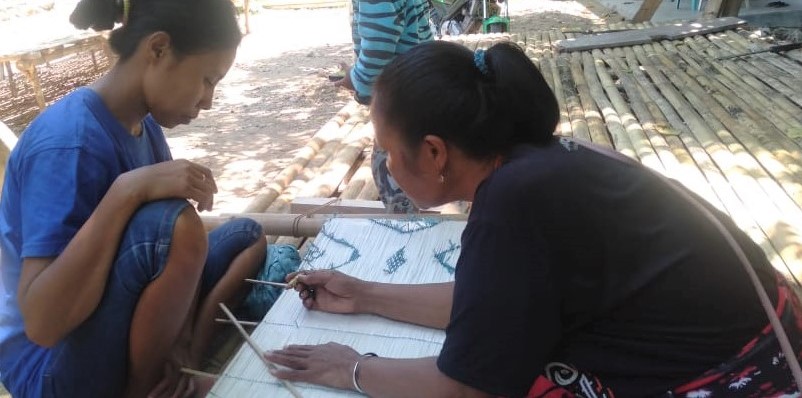The Sumbanesse ikat woven cloth has been widely known and admired for its economic, aesthetic, spiritual, socio-cultural values, yet little is known of its narration.

The strength of the weaving is manifested in the interrelation of the combination of motifs, colors, sizes, and different types that keep the stories behind the long creation process. This unity expresses symbols, meanings, identity, and socio-cultural class, which is related to people’s life as a community and their connection with belief in the Almighty. It is this unity of symbols and meanings that causes tenun ikat not to be just clothes that cover the body but has multiple meanings and functions related to women’s lives, socio-culture, economy, environment, and spirituality.
To weave is to ‘weave’ the life. As in the original story, the Sumbanesse women’s dream was to become Kawinni Gilling. Their nails, fingers, and half the length of their hands are usually dark blue as a symbol of creativity, hard work, and keen on making money. They are the dream of every woman and the ideals of men, in-laws, and male families.
The Sumbanesse women’s dream was to become Kawinni Gilling. Their nails, fingers, and half the length of their hands are usually dark blue as a symbol of creativity, hard work, and keen on making money. They are the dream of every woman and the ideals of men, in-laws, and male families.
But the story weakens in line with the pounding of the loom in the narrative strains of the weaving women who are also getting weaker due to age and the frenzy of modernization. Money seems to be the ultimate goal.
This research on ikat weaving -involving interested participating parties- is an effort to declare: The narrative is not here to end, Kawinni Gilling has to be inherited, regenerated. Arise, Sumbanesse Ikat Weaving!
Field Research:

